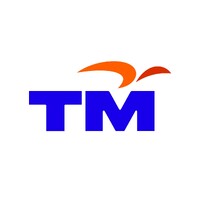
Telekom Malaysia
TM is the national connectivity and digital infrastructure provider and Malaysia’s leading integrated telco; offering a comprehensive suite of communication services and solutions in fixed (telephony and broadband), mobility, content, WiFi, ICT, Cloud and smart services. TM is driven by stakeholder value creation in a highly competitive environment and places, emphasis on delivering an enhanced customer experience via continuous customer service quality improvements and innovations, whilst focusing on increased operational efficiency and productivity. As the enabler of the nation’s Digital Malaysia aspiration, TM has been at the forefront of every telecommunications technology evolution in the country and will continue to do so. It provides the communications backbone of Malaysia with the widest connectivity and convergence network. TM remains committed to expanding its network with a comprehensive digital infrastructure. Moving beyond connectivity services, TM is developing new value-added digital services to cater to a more digital lifestyle and society, digital businesses, and digital government, striving to make “Life and Business Easier, for a better Malaysia.” For further information on TM, visit www.tm.com.my. . SSM: 128740-P






